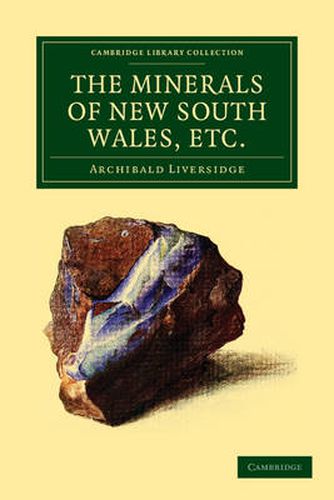Readings Newsletter
Become a Readings Member to make your shopping experience even easier.
Sign in or sign up for free!
You’re not far away from qualifying for FREE standard shipping within Australia
You’ve qualified for FREE standard shipping within Australia
The cart is loading…






Throughout the nineteenth century, Britain remained hungry for minerals to fuel her industrial and economic growth. Archibald Liversidge (1846-1927) found his knowledge and research to be in high demand. He had studied at the Royal College of Chemistry, and then obtained an exhibition to Cambridge, where he founded the Cambridge University Natural Sciences Club. At just twenty-seven years old Liversidge was appointed Reader in Geology at the University of Sydney, where he revolutionized the study of minerals and their potential applications. First published in 1876, and reprinted here from the enlarged, third edition of 1888, his chemical audit of the minerals of New South Wales became a key text for students of this field. Divided into two sections that address metallic and non-metallic minerals in turn, and incorporating a detailed map and substantial appendix, this work is of enduring interest and importance to geologists, chemists and historians of science.
$9.00 standard shipping within Australia
FREE standard shipping within Australia for orders over $100.00
Express & International shipping calculated at checkout
Throughout the nineteenth century, Britain remained hungry for minerals to fuel her industrial and economic growth. Archibald Liversidge (1846-1927) found his knowledge and research to be in high demand. He had studied at the Royal College of Chemistry, and then obtained an exhibition to Cambridge, where he founded the Cambridge University Natural Sciences Club. At just twenty-seven years old Liversidge was appointed Reader in Geology at the University of Sydney, where he revolutionized the study of minerals and their potential applications. First published in 1876, and reprinted here from the enlarged, third edition of 1888, his chemical audit of the minerals of New South Wales became a key text for students of this field. Divided into two sections that address metallic and non-metallic minerals in turn, and incorporating a detailed map and substantial appendix, this work is of enduring interest and importance to geologists, chemists and historians of science.